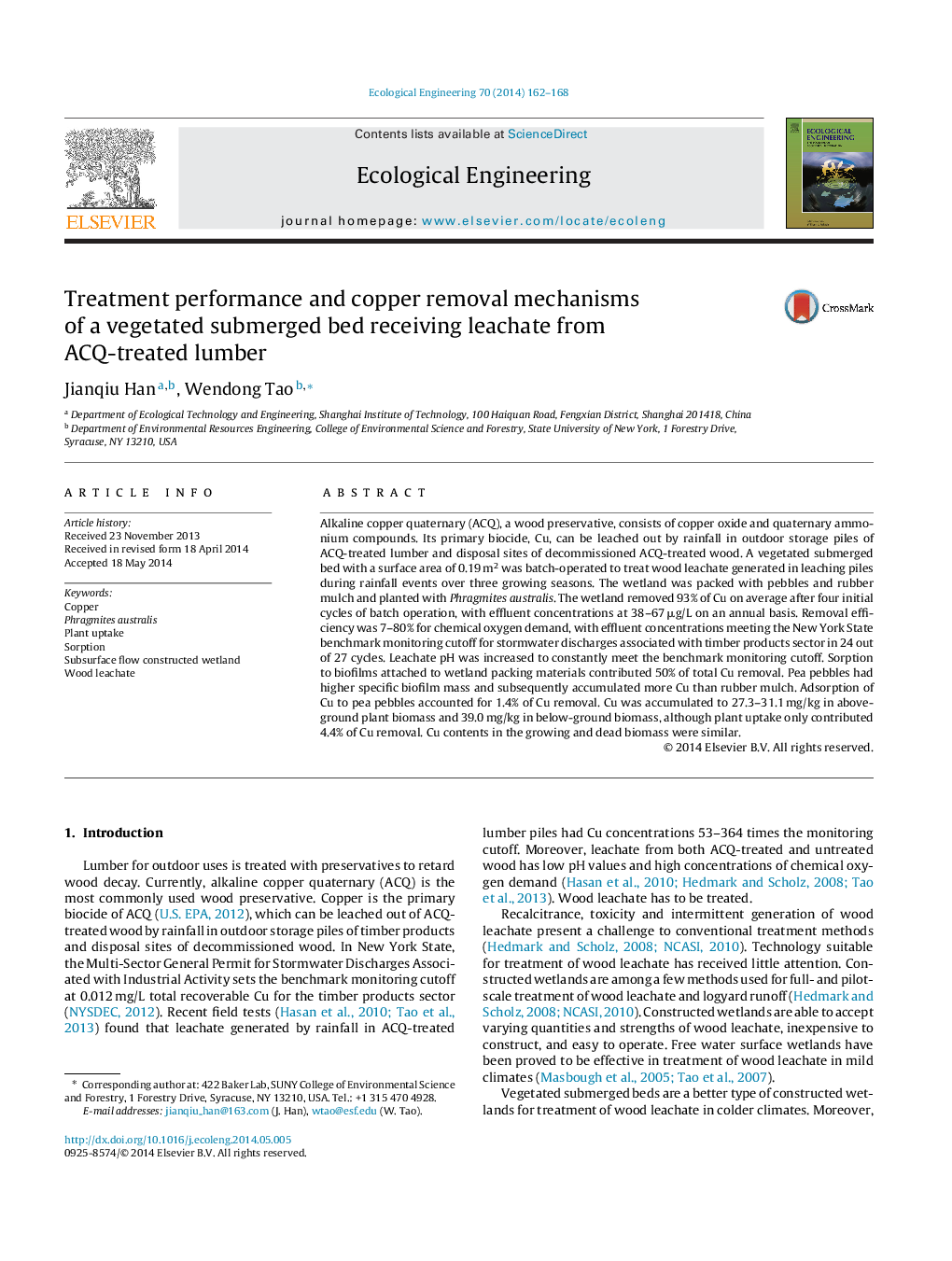| Article ID | Journal | Published Year | Pages | File Type |
|---|---|---|---|---|
| 6302130 | Ecological Engineering | 2014 | 7 Pages |
Abstract
Alkaline copper quaternary (ACQ), a wood preservative, consists of copper oxide and quaternary ammonium compounds. Its primary biocide, Cu, can be leached out by rainfall in outdoor storage piles of ACQ-treated lumber and disposal sites of decommissioned ACQ-treated wood. A vegetated submerged bed with a surface area of 0.19 m2 was batch-operated to treat wood leachate generated in leaching piles during rainfall events over three growing seasons. The wetland was packed with pebbles and rubber mulch and planted with Phragmites australis. The wetland removed 93% of Cu on average after four initial cycles of batch operation, with effluent concentrations at 38-67 μg/L on an annual basis. Removal efficiency was 7-80% for chemical oxygen demand, with effluent concentrations meeting the New York State benchmark monitoring cutoff for stormwater discharges associated with timber products sector in 24 out of 27 cycles. Leachate pH was increased to constantly meet the benchmark monitoring cutoff. Sorption to biofilms attached to wetland packing materials contributed 50% of total Cu removal. Pea pebbles had higher specific biofilm mass and subsequently accumulated more Cu than rubber mulch. Adsorption of Cu to pea pebbles accounted for 1.4% of Cu removal. Cu was accumulated to 27.3-31.1 mg/kg in above-ground plant biomass and 39.0 mg/kg in below-ground biomass, although plant uptake only contributed 4.4% of Cu removal. Cu contents in the growing and dead biomass were similar.
Related Topics
Life Sciences
Agricultural and Biological Sciences
Ecology, Evolution, Behavior and Systematics
Authors
Jianqiu Han, Wendong Tao,
